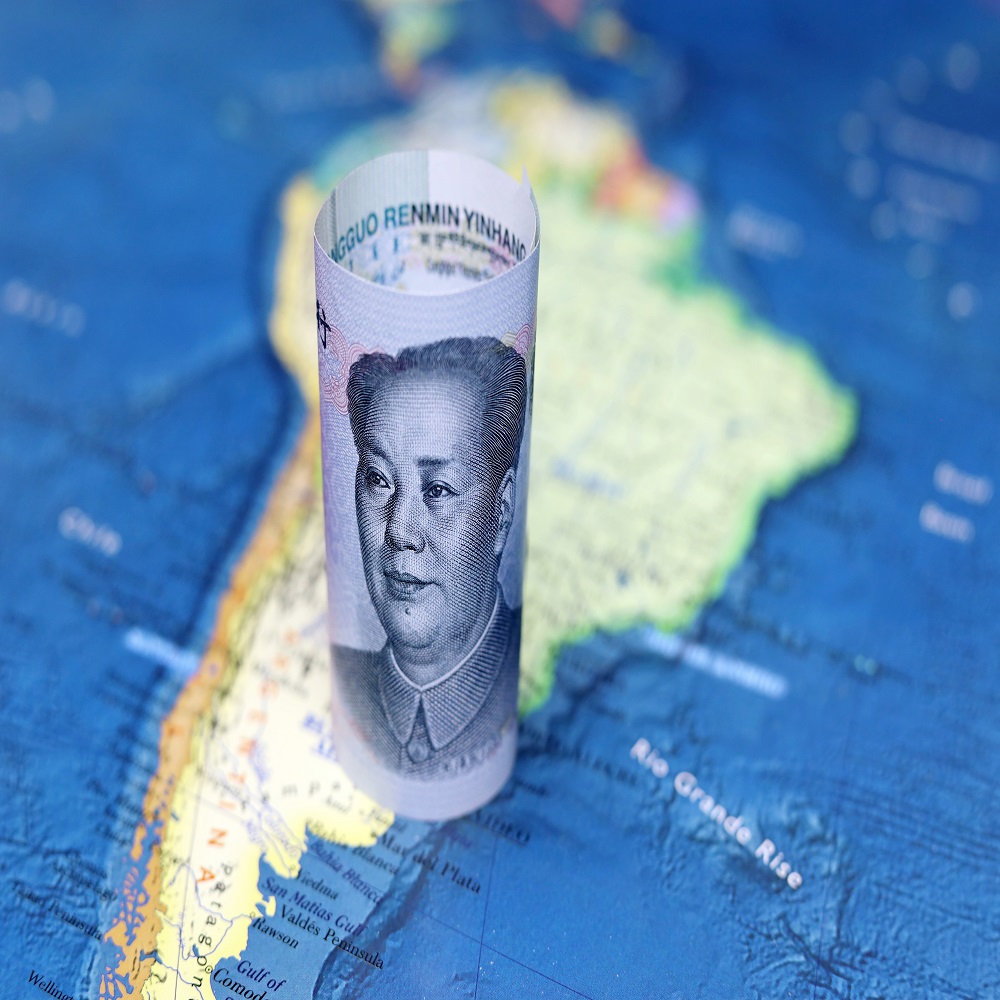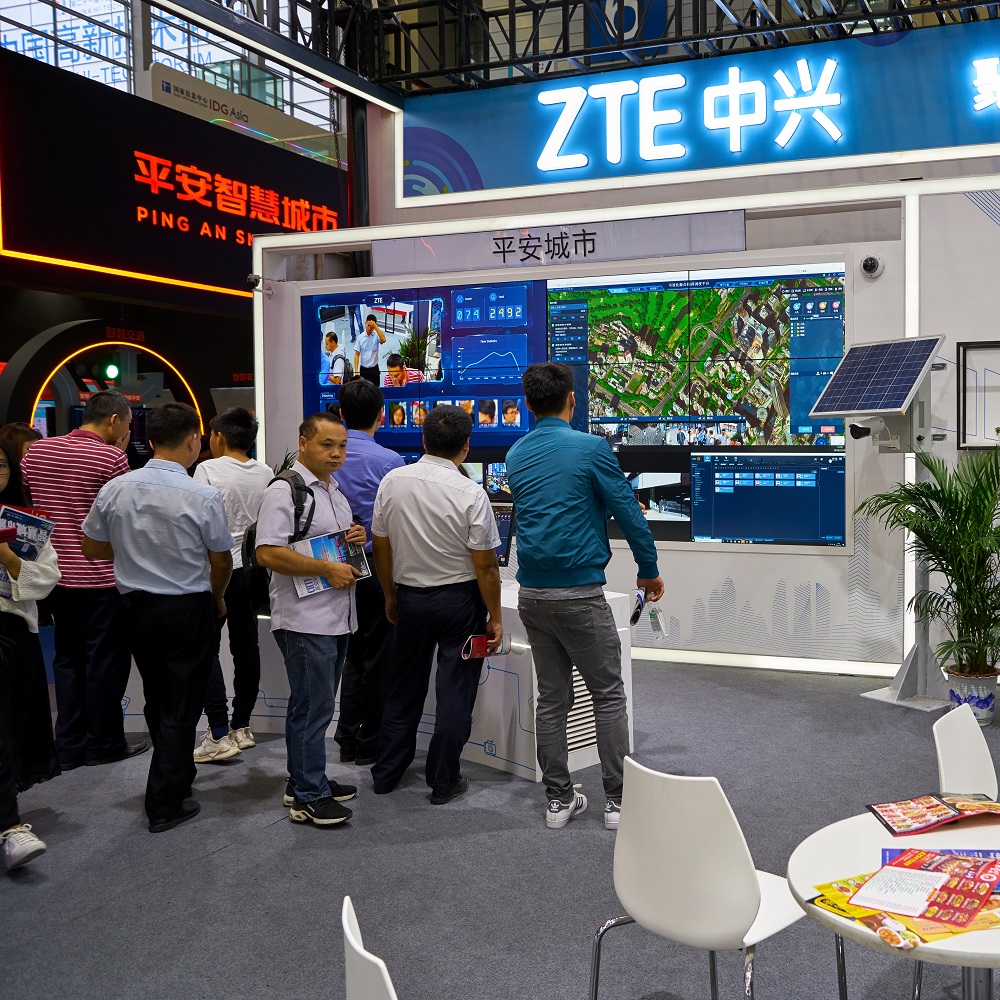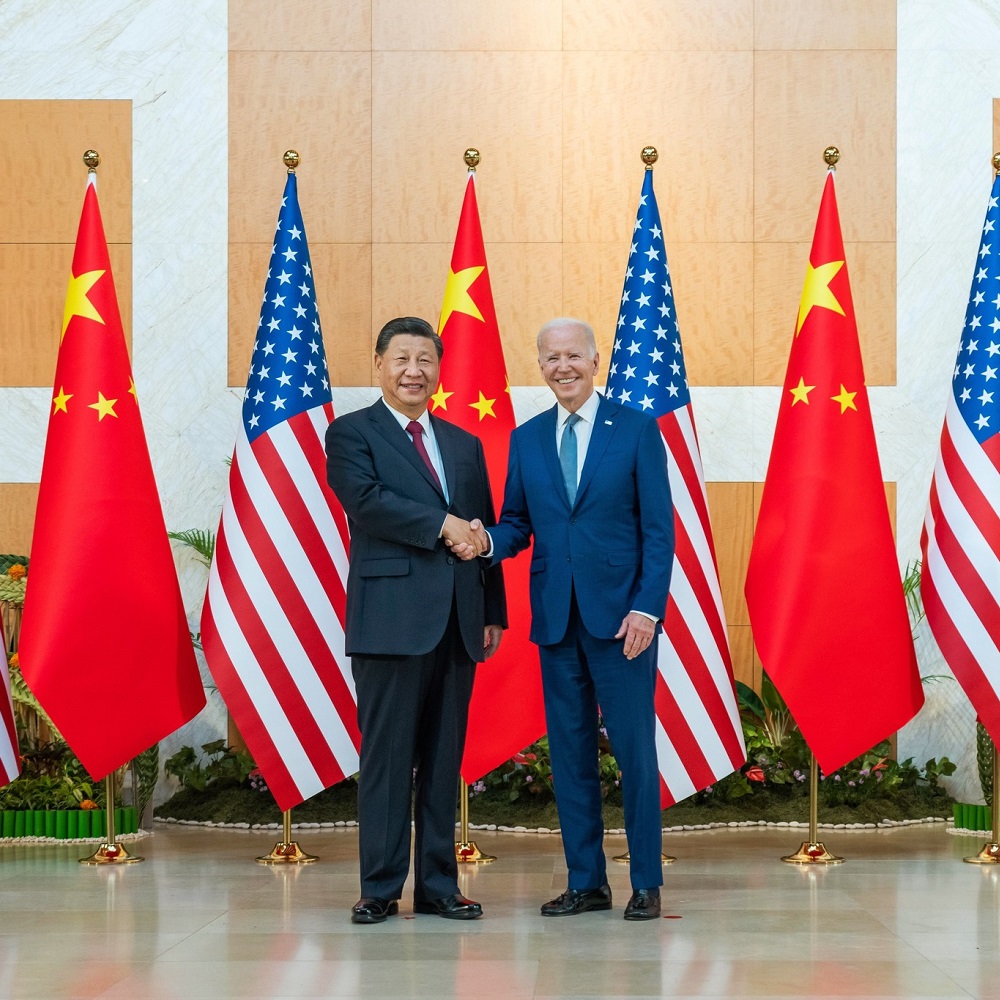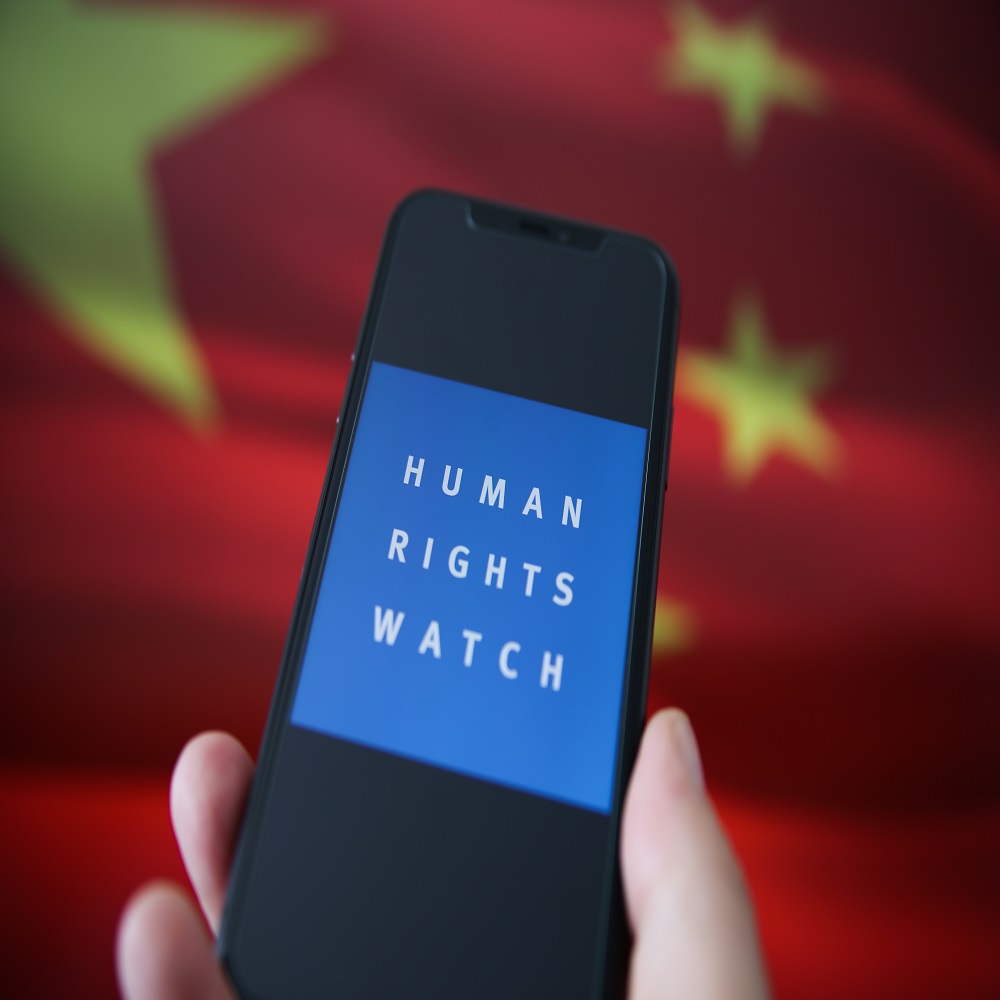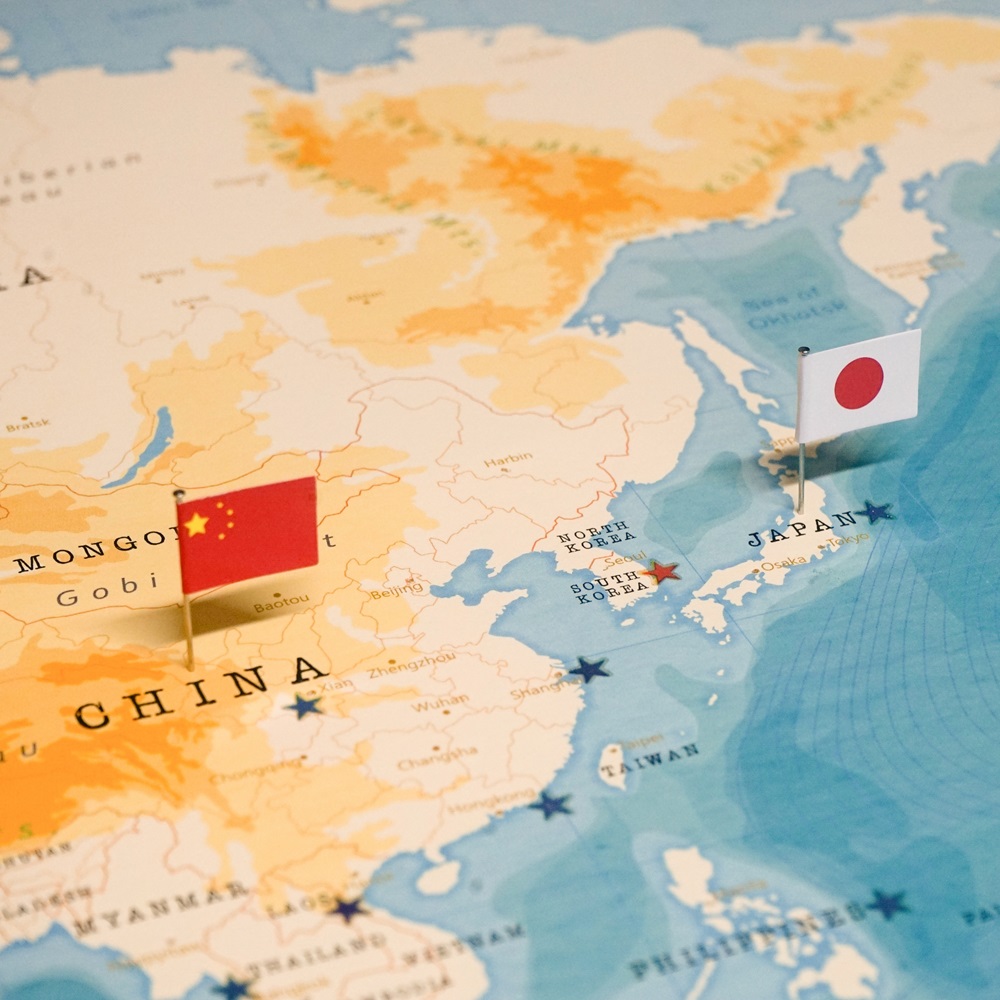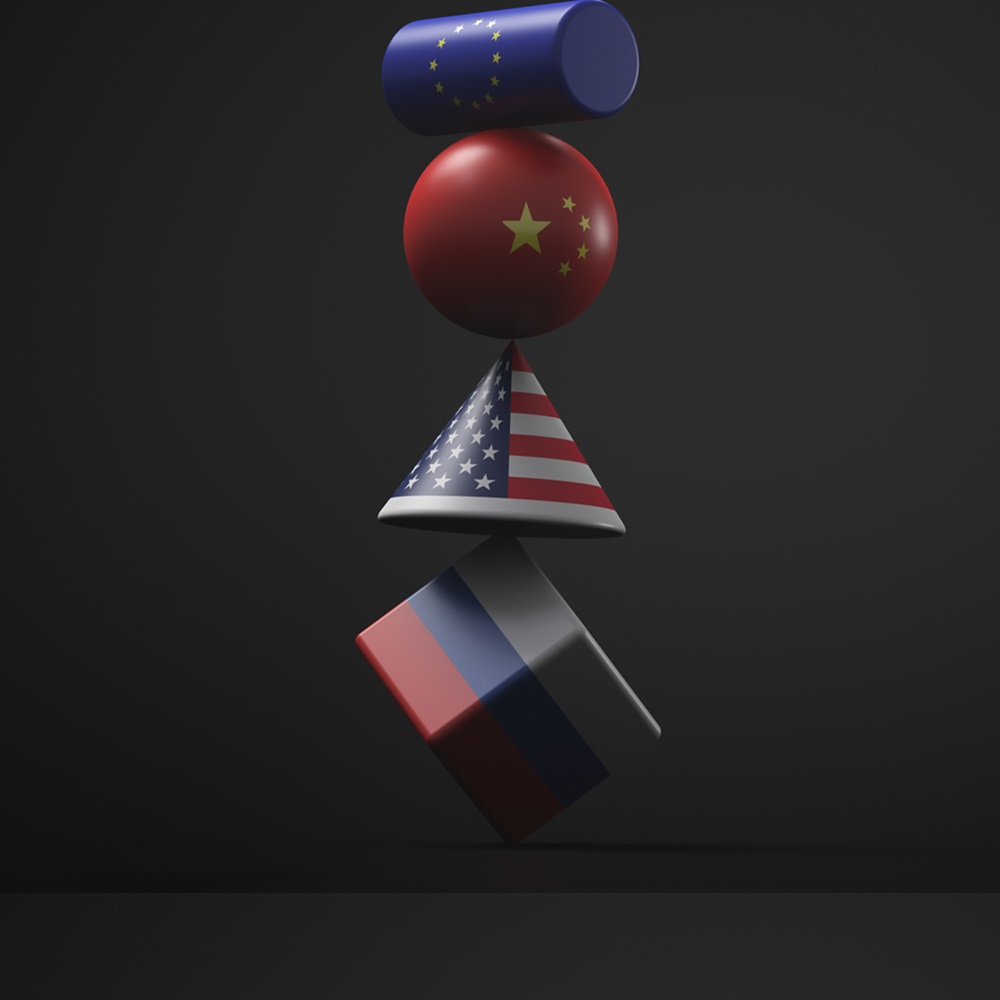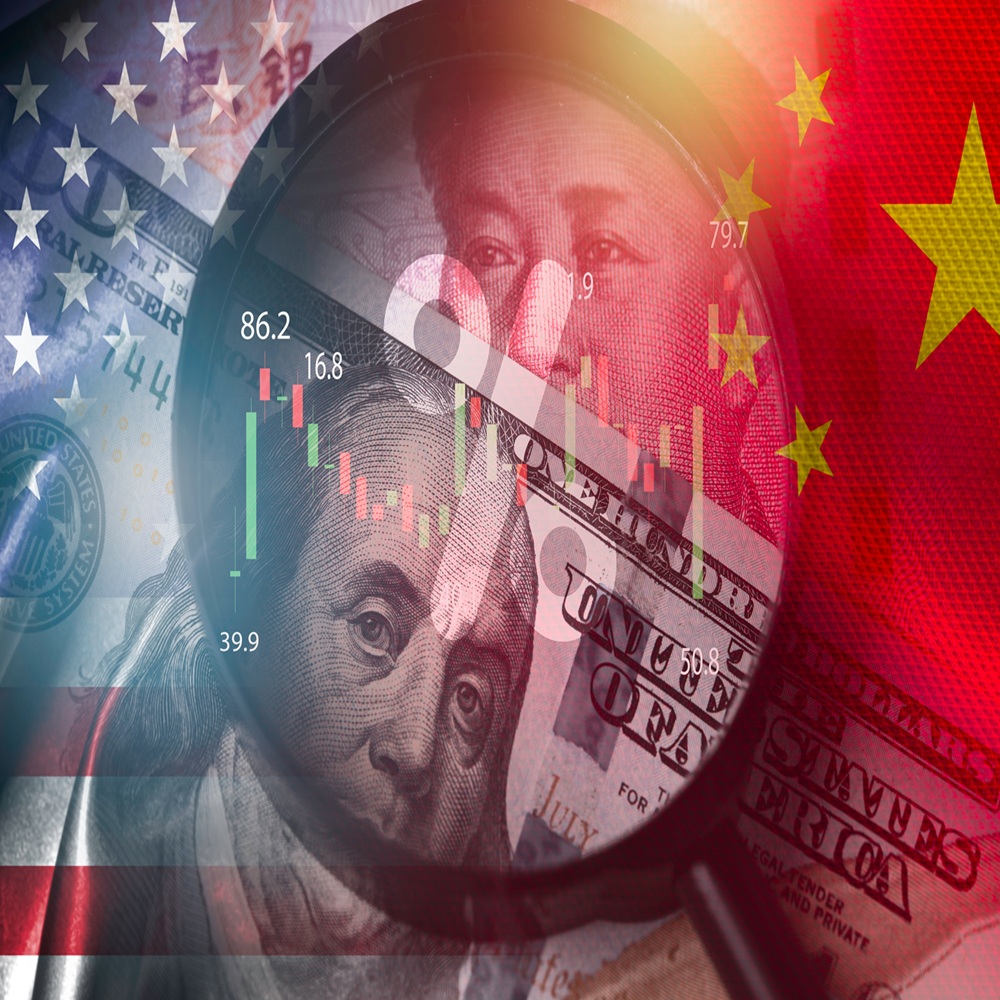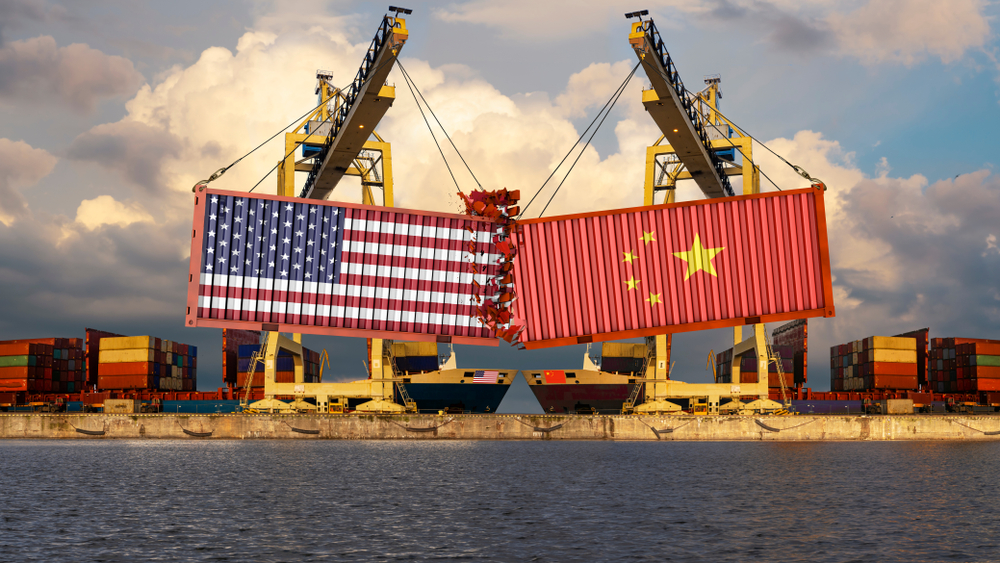
Drivers of U.S.-China Strategic Competition
by Stephen R. Nagy
Understanding the Chinese Perspective The relationship between the United States and China is one of the most important and mutually beneficial bilateral relationships in the world. Nonetheless, it is also complex and contentious, with both countries vying for geopolitical influence and economic dominance. This brief examines drivers of U.S.-China strategic competition from the perspective of Beijing incorporating the prism of MarxistLeninist ideology, domestic politics in the U.S., China's needed alignment with Russia, nationalism, technological advancements such as AI, the role of regional players such as ASEAN, Japan, and the E.U., and Comprehensive National Power (CNP). Understanding this analytical lens contributes to deeper comprehension of China's security anxieties and world view that may provide insight to enhance engagement, resilience, and deterrence in bilateral relations with China. Introduction The relationship between the United States and China is one of the most important and mutually beneficial bilateral relationships in the world today. To illustrate, according to data published by the U.S. Bureau of Economic Analysis (BEA), total imports and exports grew 2.5 percent year-on-year to reach US$690.6 billion in 2022, breaking the previous record of US$658.8 billion set in 2018. This increase is despite the divisions associated with the COVID-19 pandemic and mutual unfavorable ratings. Nonetheless, the U.S.-China relationship is also complex and contentious, with both countries vying for geopolitical influence and economic dominance. Whether it is the rules-based Free and Open IndoPacific or the realization of Xi Jinping’s China dream, the competition for primacy between the U.S. and China will impact friends, partners, and foes of both states. Viewed from Beijing, Chinese scholars and analysts base their assessment of the trajectory of the U.S.-China strategic competition through several lens including the prism of Marxist-Leninist ideology, domestic politics in the U.S., China’s needed alignment with Russia, nationalism, technological advancements such as AI, the role of regional players such as ASEAN, Japan, and the EU, and Comprehensive National Power (CNP). Shaped by Marxist-Leninist Ideology Marxist-Leninist ideology has played a leading if not central role in shaping the Chinese Communist Party's (CCP) approach to governance and foreign relations. The CCP came to power in 1949 following a successful revolution led by Mao Zedong. Mao was heavily influenced by Marxist-Leninist thought. Since then, the CCP has maintained a commitment to Marxist-Leninist ideology, although its interpretation and application have evolved over time. Today, as former Australian Prime Minister Kevin Rudd and author of The Avoidable War: The Dangers of a Catastrophic Conflict between the US and Xi Jinping's China writes, Xi’s China leans left in terms of Marxist-Leninist socio-economic organization and right in terms of nationalism. Rudd’s analysis echoes President Xi’s speech on “Hold High the Great Banner of Socialism with Chinese Characteristics and Strive in Unity to Build a Modern Socialist Country in All Respects” in his report to the 20th National Congress of the CPC. In that speech, Xi stressed that “Marxism is the fundamental guiding ideology upon which our Party and our country are founded and thrive. Our experience has taught us that, at the fundamental level, we owe the success of our Party and socialism with Chinese characteristics to the fact that Marxism works, particularly when it is adapted to the Chinese context and the needs of our times.” At its core, Marxist-Leninist ideology emphasizes the importance of class struggle and the need for the working class to overthrow the ruling class to achieve a classless society. In the Chinese context, this has translated into a focus on creating a socialist society and promoting the welfare of the Chinese people under the umbrella term ‘Socialism with Chinese Characteristics’. In terms of China’s relationship with the U.S., Marxist-Leninist ideology has contributed to a view of the U.S. as a capitalist and imperialist power that seeks to undermine China’s socialist system. This view is rooted in the Marxist-Leninist belief that capitalist powers are inherently expansionist and seek to dominate other countries to secure their own economic and political interests. They see the U.S. as an imperialist power seeking to maintain its hegemony over the world, while China represents a rising power challenging the established order, as written by Graham Allison in his book Thucydides’ Trap. Chinese analysts believe that the U.S. is threatened by China’s rise and is seeking to contain it through various means, including economic sanctions, military posturing, and diplomatic pressure as evidenced by the Trump administration’s trade war, its network of alliances throughout the region, the advent of minilateral cooperation such as the Quad and AUKUS, and the perceived fomenting of independent movements in Hong Kong, Xinjiang, and Taiwan. They argue that the U.S. is using its military alliances and partnerships with countries such as Japan, South Korea, and Australia to encircle China and limit its influence in the region. These perspectives ignore that the U.S. alongside with Japan and others openly supported China’s entry into the WTO, the 2008 Summer Olympics, and gave China a leadership position at the Paris Climate Accord. These initiatives demonstrated that the U.S. and other countries were willing to work with China on global issues and support its development. Destabilizing Influence of U.S. Domestic Politics While Marxist-Leninist perspectives of U.S.-China relations offer a macro-level understanding of how China views the inevitability of great power rivalry between Washington and Beijing, Chinese analysts also pay close attention to domestic politics in the U.S. and its impact on U.S.-China relations. Chinese analysts believe that the current political climate in the U.S. is highly polarized, and that these domestic political dynamics are affecting U.S. foreign policy, including its stance towards China. They see the Trump administration’s trade war with China as a reflection of this polarization, and argue that it has damaged the relationship between the two countries. They also note that the Biden administration has continued many of the same policies as the Trump administration, including maintaining tariffs on Chinese goods and pursuing a tough stance on technology transfer and intellectual property theft. The build-up to the 2024 presidential election for most will be one of intensifying securitization of relations with China. President Biden will not be in a position to show any weakness in his China policy. Equally so, the Republicans, whether it is former President Trump or an alternative GOP candidate will take an “All because of China” approach, when it comes to foreign policy, like advocating for a hard decoupling of the economies or even more provocatively, possibly migrating away or redefining the “One China” policy. Developing China-Russian Alignment Chinese analysts also view the relationship between China and Russia as an important factor in the trajectory of U.S.-China relations. They see the two countries as natural partners, sharing a common interest in challenging U.S. dominance of the world. They believe that the China-Russia all-weather partnership is growing stronger and that it poses a significant challenge to U.S. interests. For Russia, Pax Sinica would offer it a much more hospitable environment than the one provided by the Pax Americana, according to the authors of The Beijing-Moscow Axis: The Foundations of an Asymmetric Alliance published by the Centre for Eastern Studies (OSW). For China, a tightening of the alignment with Russia will be critical to ensuring that U.S. does not drive a wedge between China and Russia by pursuing a policy of containment against both countries, a policy that Chinese analysts view as unlikely to succeed. The invasion of Ukraine is a case in point. Despite Russia’s invasion violating the U.N. Charter and China’s Five Principles of Peaceful Co-existence, Beijing has taken a pro-Russian neutrality position refusing to condemn Russia. This is not an endorsement of the invasion or of Putin. It is a clear indication of the importance China places on the deepening Sino-Russian alignment and the reality that neither country can afford a geopolitical divorce. In fact, the recent paper ‘China’s Position on the Political Settlement of the Ukraine Crisis’ continues to echo President Xi’s Workers Report at the 20th Party Congress in October 2022, which explicitly used the expression that “no country’s security should come at the expense of another country’s security,” an explicit rejection of the U.S. and Western countries’ views that Russia has engaged in an unprovoked attack against the sovereign state of Ukraine. Intensifying Nationalism Chinese nationalism is another important factor by which Chinese analysts understand the trajectory of U.S.-China relations. They view Chinese nationalism as a natural response to the country’s history of humiliation at the hands of foreign powers, including the U.S. Carefully curated since the Tiananmen Square incident in 1989, Zheng Wang writes in his book Never Forget National Humiliation: Historical Memory in Chinese Politics and Foreign Relations that Beijing has placed the century of humiliation at the center of China’s national building process and a nationalist movement in which victimhood, national rejuvenation, and a perineal sense of insecurity concerning the West and particularly the U.S. is the major pillar. These narratives have been meticulously manipulated and deployed to build a national identity in which China must resist anti-China forces and those states that wish to prevent “China’s rightful rise.” Events such as the 70th Anniversary of Victory of Chinese People’s War of Resistance Against Japanese Aggression and World Anti-Fascist War, 100th anniversary of the founding of the Chinese Communist Party, or national aspirations such as the China Dream are all constructed with the purpose of infusing into Chinese citizens a nationalism linked to the CCP’s selective understanding of history. Based on these selective views of history, scholars such as Qin Pang in their co-authored article on “China’s Growing Power Makes Its Youth Hawkish?” Evidence from the Chinese Youth’s Attitudes toward the U.S. and Japan’ find that Chinese citizens view the United States as seeking to contain China’s rise and limit its influence in the region, and that this is seen by many Chinese as an affront to their national pride. Chinese analysts believe that Chinese nationalism is a powerful force that will shape the country's foreign policy for years to come, and that it will continue to be a source of tension in U.S.-China relations. For the U.S. and other like-minded states, Chinese nationalism that is based on victimhood, national rejuvenation, and a perennial sense of insecurity concerning the West will not be a platform for stabilizing and creating constructive relations, especially if this nationalism drives territorial expansion in the South and East China Seas, the Himalayan plateau or across the Taiwan straits. Dominating AI and Other Technologies The rapid advancement of technology, particularly in the areas of AI and 5G, is another factor that Chinese analysts believe will shape the trajectory of U.S.-China relations. They see China as a leader in these areas, with the potential to surpass the United States in terms of technological innovation and economic growth. Chinese analysts argue that the U.S. is threatened by China’s technological progress and is seeking to limit its access to advanced technology, particularly in the areas of AI and 5G. They also believe that the United States is using national security concerns as a pretext for restricting Chinese access to these technologies. The U.S. Chips Act and the growing first tier semiconductor and technology firewall that is being erected around China by the U.S. in cooperation with Japan, South Korea, the Netherlands and Taiwan demonstrate the centrality the U.S places on dominating these spheres of technology. The consequence for China according to analysts in and out of China is that it will no longer have access to the most sophisticated semi-conductors, semiconductor producing machines and the associated expertise to keep up in the race to be the first mover when it comes to AI and other technologies that rely on first tier semi-conductor chips. In concrete terms, this means that as the U.S. and its allies will form a chips coalition among like-minded countries resulting in their collective abilities to generate scientific breakthroughs that can be translated into military and economic advantages that will preserve U.S. dominance and the existing rules-based order. Beijing is aware of this challenge and has attempted to reduce its reliance on the U.S. and Western states through its Made in China 2025 strategy and Dual Circulation Strategy. Whether these initiatives will be sufficient to outmaneuver U.S. initiatives to dominate semi-conductors and ultimately AI and other sensitive technologies is yet to be determined. Role of ASEAN, Japan, and the EU Chinese analysts also pay close attention to the role of regional players such as ASEAN, Japan, and the EU in the trajectory of U.S.-China relations. They believe that these countries have a significant influence on the balance of power in the region and that their relationships with the United States and China are critical. Japan’s release in December 2022 of three strategy documents—the National Security Strategy (NSS), National Defense Strategy (NDS), and Defense Buildup Program aims to uphold the current rules-based order and prevent the emergence of Chinese hegemony in the IndoPacific region. Meanwhile, the new Washington Declaration between the United States and the Republic of Korea (RoK) commits to engage in deeper, cooperative decision-making on nuclear deterrence, including through enhanced dialogue and information sharing regarding growing nuclear threats to the ROK and the region. The recent meeting between U.S. President Biden and Philippine President Marcos reaffirms the United States’ ironclad alliance commitments to the Philippines, underscoring that an armed attack on Philippine armed forces, public vessels, or aircraft in the Pacific, including in the South China Sea, would invoke U.S. mutual defense commitments under Article IV of the 1951 U.S.- Philippines Mutual Defense Treaty.”. These are explicit examples of how U.S. allies, through their cooperation and partnerships with the U.S., are aiming to preserve U.S. hegemony. In short, Chinese analysts argue that the United States is seeking to use its relationships with these countries to contain China’s rise, while China is seeking to build closer relationships with its neighbors and BRI partners to expand its influence and build win-win relationships based on its Five Principles of Peaceful Co-existence. Lastly, U.S. and ASEAN watchers in China believe that the United States is losing influence in the region, particularly with ASEAN countries, and that China is poised to fill the power vacuum owing to its extensive economic ties in the region, ties that many in Southeast Asia are dependent on for sustainable development despite reservations over the possible negative ramifications of increased Chinese economic and diplomatic influence in the region. Heft of Comprehensive National Power (CNP) Sensitive to the changing power balances and what this means for China’s ability to achieve its core national interests, China places enormous weight on Comprehensive National Power (CNP) as a key measure of a country’s overall strength and capability in all aspects of national development, including economic, military, technological, cultural, and diplomatic power as Hu Angang and Men Honghua write in their article title “The rising of modern China: Comprehensive national power and grand strategy”. The concept of CNP has been used by Chinese leaders since the 1980s to assess China’s relative strength compared to other countries, particularly the United States. In recent years, China has focused on increasing its CNP as part of its strategic competition with the U.S. Beijing aims to surpass the U.S. in terms of overall power and influence, believing that a higher CNP will enable the country to better protect its national interests, enhance its global influence, and achieve its long-term strategic goals. To increase its CNP, China has pursued a range of policies and initiatives. One of the key areas of focus has been economic development, with China becoming the world’s second-largest economy and a major player in global trade and investment. Through the Made in China 2025, the Belt Road Initiative (BRI), and the Dual Circulation Model, China has also invested heavily in science and technology, with a particular emphasis on emerging technologies such as artificial intelligence, quantum computing, and 5G networks. In addition, China has modernized its military and expanded its global military presence based on the civil-military fusion (MCF), with the goal of becoming a world-class military power by the middle of the century. China has also pursued a more assertive foreign policy, seeking to expand its influence in key regions such as Southeast Asia, Africa, and the Middle East. Concurrently, China has also sought to promote its soft power, through initiatives such as the Belt and Road Initiative (BRI), which aims to enhance connectivity and economic cooperation between China and other countries. China has also sought to promote its culture and values through the Confucius Institutes and its latest Global Civilization Initiative calling for “called for respecting the diversity of civilizations, advocating the common values of humanity, valuing the inheritance and innovation of civilizations, and strengthening international people-to-people exchanges and cooperation.” China’s focus on increasing its CNP is driven by its desire to become a major global power and to challenge the U.S.’ dominant position in the international system. While China’s rise has brought many benefits to the country and the world, it has also raised concerns among some countries, particularly the U.S., about the potential implications of China’s growing power and influence. This is especially true as we have seen a growing track record of economic coercion, grey zone tactics, and rejecting international law such as the Permanent Court of Arbitration’s July 2016 decision against its claims in the South China Sea.Conclusion Chinese analysts clearly view the relationship between the United States and China through a complex lens. They see the relationship with the United States as one of the most important in the world and believe that it will continue to shape the trajectory of global politics and economics for years to come. While there are significant challenges and tensions in the relationship between the two countries, Chinese analysts also see opportunities for cooperation and collaboration, particularly in areas such as climate change and global health.









